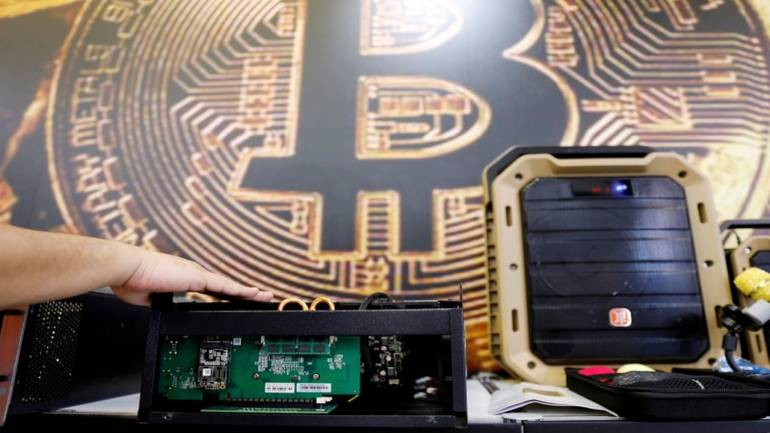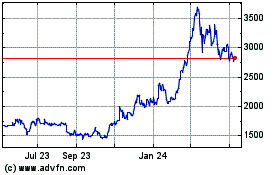IBM Is Working With a 'Crypto Dollar' Stablecoin
July 18 2018 - 5:14AM
ADVFN Crypto NewsWire

IBM is exploring whether a cryptocurrency pegged
to the U.S. dollar may be a better option for making payments than
other digital currencies, which tend to be volatile.
The computing giant is already a pioneer in business applications for
blockchain, using the digital ledger technology that underpins
Bitcoin to help companies track their supply chains as well as to
make international payments more efficient.
For such payments, IBM currently uses a cryptocurrency known as Stellar
Lumens as a conduit. Now, IBM will also begin testing a
so-called stablecoin, or “crypto dollar,”
that runs on the Stellar blockchain network. The stablecoin is
called Stronghold USD, after the fintech startup Stronghold that is behind the project.
“There’s this tremendous opportunity to make blockchain payments
feasible, especially for cross-border,” says Bridget van Kralingen,
IBM’s senior vice president of global industries, platforms and
blockchain. “What is great about this is they are just basically
digital dollars—digital fiat currency.”
That may help cut down on the foreign exchange costs associated
with making cross-border blockchain payments, which until now have
required conversion from one government-issued, or fiat,
currency—say the U.S. dollar—to the Stellar Lumens cryptocurrency,
and back into another fiat currency, such as Mexican pesos. Using a
stablecoin as a proxy for the fiat currency could reduce the risk
of getting a worse exchange rate when the money is converted back
into fiat currency, says van Kralingen, as the prices of digital
currencies like Stellar Lumens as well as Bitcoin can often swing
wildly.
“We believe this experimentation with stablecoins can play a
very big role in improving costs,” she adds. While IBM is currently
only working with the Stronghold USD stablecoin, it is interested
in potentially using similar digital versions of other countries’
legal tender. “I think if it can be done with the U.S. dollar, it
can be done with almost any currency,” says van Kralingen.
Stablecoins have become one of the biggest trends in
cryptocurrency. Tether, the most widely used dollar-backed coin,
now accounts for more Bitcoin trading volume than the
U.S. dollar. A slew of other companies are also developing
their own versions of a $1 coin, including Circle, TrustToken, and Basis.
While most other stablecoins are built atop the blockchain
systems of Bitcoin and Ethereum, Stronghold USD, which is federally
insured by the bank Prime Trust, is one of only two new stablecoins
to run on the Stellar network. That should allow Stronghold USD to
process hundreds of transactions per second, far more than other
blockchains can handle, with Bitcoin limited to an estimated
average of just seven transactions per second, van Kralingen
says.
Already, she adds, central banks are showing interest in using
digital versions of government currencies; stablecoins could
potentially pave the way for a “Fed Coin,” as well as greater usage of
cryptocurrency by banks in general. “I think in the future you’ll
see more,” van Kralingen says. “The way you’d settle FX today with
Citi—I think you could do that with a stablecoin in the
future.”
IBM also announced Tuesday that it is investing in a new
academic partnership with Columbia University to accelerate
startups and innovation in the field of blockchain technology. The
Columbia-IBM Center for Blockchain and Data Transparency represents
the first time the university has adopted the name of a private
sector company for one of its institutions.
By
Jen Wieczner
Ethereum (COIN:ETHEUR)
Historical Stock Chart
From Mar 2024 to Apr 2024

Ethereum (COIN:ETHEUR)
Historical Stock Chart
From Apr 2023 to Apr 2024
